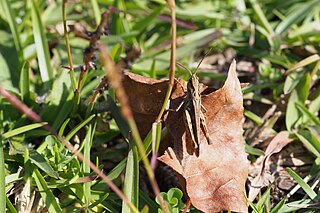
The polar bear is a large bear native to the Arctic and nearby areas. It is closely related to the brown bear, and the two species can interbreed. The polar bear is the largest extant species of bear and land carnivore, with adult males weighing 300–800 kg (660–1,760 lb). The species is sexually dimorphic, as adult females are much smaller. The polar bear is white- or yellowish-furred with black skin and a thick layer of fat. It is more slender than the brown bear, with a narrower skull, longer neck and lower shoulder hump. Its teeth are sharper and more adapted to cutting meat. The paws are large and allow the bear to walk on ice and paddle in the water.
Miseryfjellet, at 536 metres (1,759 ft), is the tallest peak on Bear Island (Bjørnøya), a Norwegian island in the Barents Sea. Miseryfjellet is on the eastern side of Bear Island and contains three distinct component peaks, Urd, Verdande and Skuld. These peaks are named after the three Norns in Norse Mythology. The name Bear Island is derived from the seasonal presence of polar bears, Ursus maritimus, whose population in the Barents Sea region is a genetically distinct sub-population of this species.

Sporobolus maritimus, or synonymously as Spartina maritima, the small cordgrass, is a species of cordgrass native to the coasts of western and southern Europe and western Africa, from the Netherlands west across southern England to southern Ireland, and south along the Atlantic coast to Morocco and also on the Mediterranean Sea coasts. There is also a disjunct population on the Atlantic coasts of Namibia and South Africa.

Rumex maritimus, commonly called golden dock, bristle dock, or seashore dock, is an annual plant species of the genus Rumex. Rumex maritimus grows in Argentina, Burma, Canada, China, and the United States. It is native to Canada and most of the 48 states. The life span of Rumex maritimus is rarely biennial in moist environments. This herb belongs to the family Polygonaceae.

The maritime striped squirrel or eastern striped squirrel is a species of rodent in the family Sciuridae. It is found in southern and eastern China, Taiwan, and Laos and Vietnam east of Mekong. It is diurnal, highly arboreal and feeds on fruits, seeds, insects; in addition its diet includes nectar of ginger.

Nitrosopumilus maritimus is an extremely common archaeon living in seawater. It is the first member of the Group 1a Nitrososphaerota to be isolated in pure culture. Gene sequences suggest that the Group 1a Nitrososphaerota are ubiquitous with the oligotrophic surface ocean and can be found in most non-coastal marine waters around the planet. It is one of the smallest living organisms at 0.2 micrometers in diameter. Cells in the species N. maritimus are shaped like peanuts and can be found both as individuals and in loose aggregates. They oxidize ammonia to nitrite and members of N. maritimus can oxidize ammonia at levels as low as 10 nanomolar, near the limit to sustain its life. Archaea in the species N. maritimus live in oxygen-depleted habitats. Oxygen needed for ammonia oxidation might be produced by novel pathway which generates oxygen and dinitrogen. N. maritimus is thus among organisms which are able to produce oxygen in dark.

Petrobius maritimus, the shore bristletail or sea bristletail, is a species of Archaeognatha found on rocky shores from the Mediterranean Sea to the North Sea .

Tijuana Slough National Wildlife Refuge is located in the most southwestern corner of the contiguous United States. As a National Wildlife Refuge, it is administered by the U.S. Fish and Wildlife Service. It was established in 1980.

Bromus maritimus is a species of brome grass known by the common names maritime brome and seaside brome. It is native to the coastal areas of California and Oregon.

Bolboschoenus maritimus is a species of flowering plant from family Cyperaceae. Common names for this species include sea clubrush, cosmopolitan bulrush, alkali bulrush, saltmarsh bulrush, and bayonet grass. It is found in seaside wetland habitats over much of the world. It is widespread across much of temperate and subtropical Africa, Asia, Europe, North America, South America and various islands.

Bolboschoenus robustus is a species of flowering plant in the sedge family. It is known by many common names: saltmarsh bulrush, alkali bulrush, sturdy bulrush, seacoast bulrush, stout bulrush, three-cornered sedge or leafy three-cornered sedge, and seaside club-rush.

Gymnopilus maritimus is a fungus species of the family Hymenogastraceae first collected in northern Sardinia, Italy, in 2006. The species produces moderately sized, sturdy mushrooms of a reddish-orange colour. The cap, which can measure up to 70 millimetres (3 in) across, is covered in orange fibrils, and sometimes has small scales. The yellowish stem measures up to 110 mm (4 in) in length by 8 mm (0.3 in) in width, and sometimes shows remnants of the partial veil. The mushrooms have thick gills of a variable colour, ranging from yellow to rust but staining darker, and the yellow flesh has a mild taste. The mushrooms leave a rusty-brown spore print, while the spores themselves measure from 7.5–11.5 micrometres (0.00030–0.00045 in) in length. The species is most similar in appearance to G. arenophilus and G. fulgens, but can be differentiated from both morphologically. Despite the similarities, it is not closely related to either, suggesting convergent evolution. Instead, within the genus Gymnopilus, it is most closely related to the spectabilis–imperialis clade. However, it is not particularly similar to any of its closest relatives.
Rhyzodiastes maritimus is a species of ground beetle in the subfamily Rhysodinae. It was described by R.T. & J.R. Bell in 1981. It is endemic to the island of Kosrae in the east of the Federated States of Micronesia. Rhyzodiastes maritimus measure 4.3–6.2 mm (0.17–0.24 in) in length.

Halacritus is a genus of clown beetles in the family Histeridae. There are more than 20 described species in Halacritus.
Blissus arenarius is a species of true bug in the family Blissidae. It is found in North America.

Tibellus maritimus is a species of running crab spider in the family Philodromidae. It is found in North America, Europe, Caucasus, Russia, Central Asia, and China.

Panurginus is a genus of bees in the family Andrenidae. There are more than 50 described species in Panurginus.
Promecotarsus is a genus of true weevils in the beetle family Curculionidae. There are at least three described species in Promecotarsus.
Anthicus maritimus is a species of antlike flower beetle in the family Anthicidae. It is found in Central America and North America.

Chorthippus maritimus is a species of slant-faced grasshopper in the family Acrididae. It is found in Asia.














